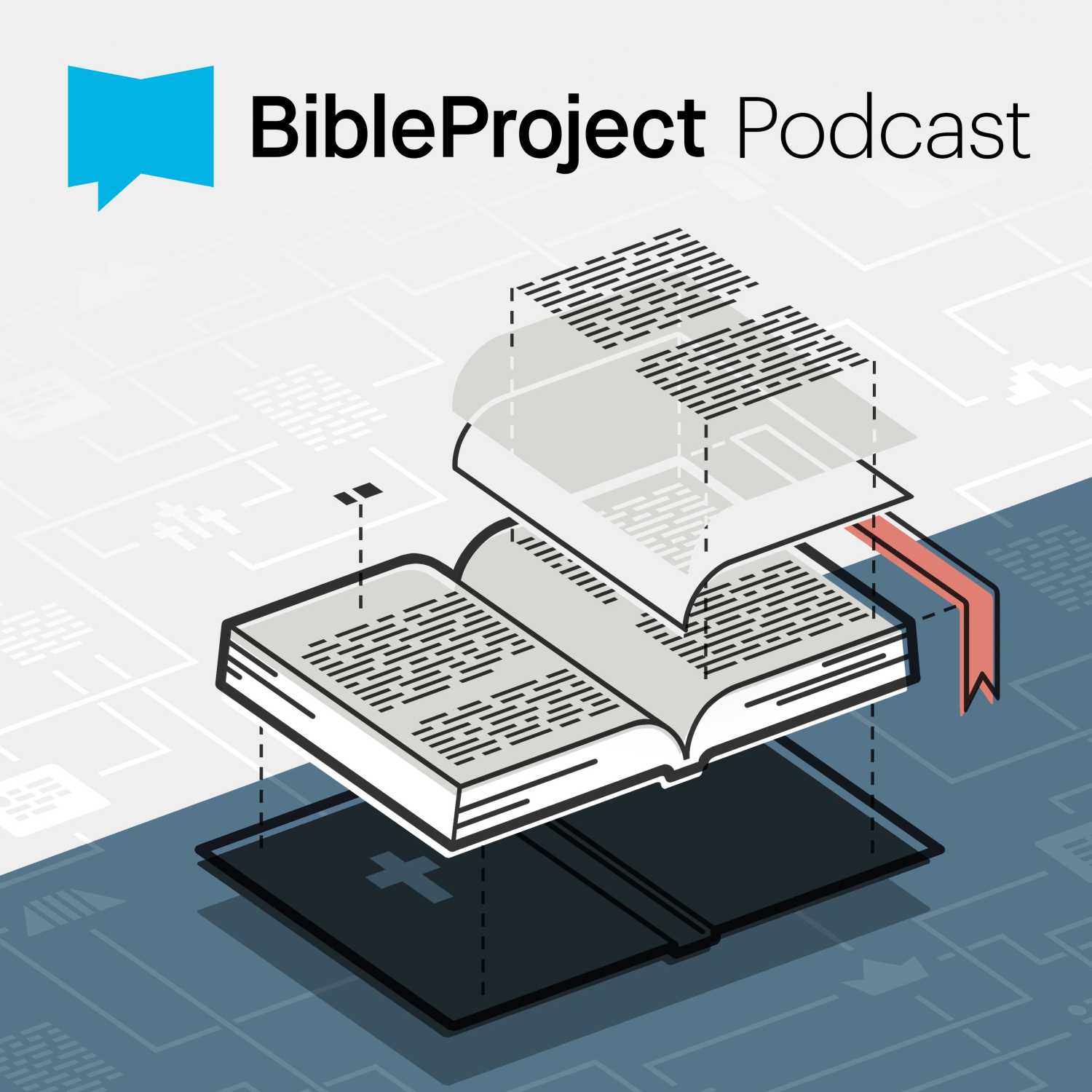.png)
Bible Basics
Welcome! The Bible Basics Podcast is designed to make the Bible approachable and accessible for all, particularly those who are new to the faith or curious about the Bible. Each episode focuses on a specific topic, breaking it down into bite-sized chunks and offering foundational knowledge about the Bible's structure, types, writing, and storyline. The ultimate goal is to increase listeners' comfort level with the Bible and deepen their relationship with God through reading His Word.
Click this link to send us a message:
https://www.buzzsprout.com/twilio/text_messages/2180587/open_sms
Bible Basics
Delving Into the New Testament: Its Structure and Significance
Ever wondered about the layout of the New Testament and how each book contributes to the story of Jesus Christ? Well, let's embark on an enlightening journey that maps out this sacred text in an easy-to-remember pattern of 4-1-21-1. We'll illuminate the four distinct angles of Jesus Christ's life presented by the Gospels, the unfolding of the early Church's history through Acts, and the treasure troves of practical wisdom found in the 21 Epistles. We'll even venture into the awe-striking world of Revelation that narrates the ultimate victory of good over evil.
RESOURCES MENTIONED IN THIS EPISODE
Unveiling the Old testament Structure: A Journey through Law, History, Poetry and Prophecy - Episode 5
We'd love to hear from you - Click Here to Text Us a Message.
Have questions about what it means to follow Jesus?
Whether you’re just starting your faith journey or exploring what the Bible teaches, we’d love to walk with you. God’s invitation is real, personal, and full of grace.
💬 Reach out to Jacqui at info@bible-basics.org
📖 Talk to a trusted Christian in your life
🏠 Or visit a Bible-believing church near you
You are not alone. God’s Word is alive, and He is still drawing people to Himself today. Don’t hesitate to take the next step.
Thank you for tuning in!
Bible Basics is now streaming in video on Youtube. Please subscribe now!
Feel free to contact us at info@bible-basics.org. We would love to hear from you!
Note: All scripture references are from the NIV translation unless otherwise indicated.
Let's start with the big picture. The New Testament is the second part of the Christian Bible following the Old Testament. It's our authoritative account of who Jesus is and how he brought salvation. It also shows how Christians should live according to God's will. Now imagine the New Testament as a neatly organized library with 27 different books. These books can be grouped into a few categories to help us better understand them. 5,12 5,5,2 - 5, 12, 5, 5, 12. How many of you remember what that's all about? Well, if you listen to the episode on the Old Testament structure, you know that it means that the 39 books of the Old Testament are divided into five books of law, 12 books of history, five books of poetry, five major prophets and ends with 12 minor prophets. That's 5, 12, , 5, 5, 12. Well, that's the Old Testament. What about the New Testament? Well, what we'll use to remember, that is 4 21, 121 1. Say it with me 4,1, 2,1 4121-- 4, 1, 21 ,1. And that's the breakdown of the New Testament structure. There are four Gospels, one book of history called Acts. They're followed by 21 epistles or letters and ends with one book of prophecy, revelation 4, 1, 21, 1.
Jacqui:And now let's look at each one of these categories. The first category we'll explore is the Gospels. These books are called the Gospels because they tell the good news of Jesus Christ. Picture these books as the heart of the New Testament. There are four of them Matthew, Mark, Luke and John. Each book provides a unique perspective on the life and teachings of Jesus Christ. They also chronicle his death, resurrection and ascension into heaven. Imagine watching the same movie from different camera angles you get a richer 3d view of the story. Similarly, the Gospels are like four different camera angles on the life of Jesus, each offering unique insights.
Jacqui:The first three Gospels, Matthew, Mark and Luke, are called synoptic. That is from the Greek word meaning to see together. They are very similar in content and order. The fourth Gospel, John, has completely different perspectives. For example, Matthew, Mark and Luke focus on Christ's ministry in Galilee, why John focuses on his ministry in Judea. The synoptic gospels contain numerous parables, while John records none. These differences between John and the synaptic gospels are not contradictory but complementary. Taking together, the four gospels form a complete testimony about Jesus Christ.
Jacqui:Ne xt up, we have Acts, also referred to as Acts of the Apostles. It's written by Luke, the same author of the Gospel of Luke. Think of this as a sequel to the gospels. If the gospels were the setup. Acts is where we see the early Christian church take shape and spread its wings during the first thirty years of the church's existence. It's like watching the birth of a movement in fast motion. Acts records the early history of the church as the gospel is carried by the apostles from Jerusalem to Rome. It emphasizes Jesus as the Messiah, shows the gospel is for all, not just for Jewish people, and puts great emphasis on the work of the Holy Spirit.
Jacqui:Now picture a section in our imaginary library dedicated to the epistles. The word epistle means letter, and it refers to letters written by the apostles to churches or individuals. They grounded the church in faith and guaranteed an authoritative, consistent body of truth for the church to live by. The epistles are a valuable resource for us to understand the Christian faith and how to live a Christian life. The letters are written to show us what it looks like to live as a follower of Jesus Christ. They are instructional in nature. An epistle would have been written on a scroll. Often it was dictated and then reviewed by the author before being delivered by a trusted messenger. Of the 21 letters, 13 are written by the apostle Paul. The remaining eight are written by various authors and are referred to as the general epistles.
Jacqui:Let's start with the 13 letters Paul wrote to various Christian communities and individuals. These letters are like personalized advice, guidance and encouragement. They're like heartfelt postcards from a friend who genuinely cares about you. Within Paul's letters, you'll find practical advice on topics like faith, love and unity, Christian doctrine, Christian ethics, church leadership, personal relationships and spiritual growth, or other topics covered by Paul's epistles. The letters are Romans, 1st and 2nd Corinthians, Galatians, Ephesians, Philippians and Colossians. Those are followed by 1st and 2nd Thessalonians, 1st and 2nd Timothy, Titus and Philemon, and they're organized then by the letters to the churches, first the longest to the shortest, and then the letters to individuals, longest to shortest. The letters are named after their recipients.
Jacqui:Moving along, we have the general letters. These are letters written by various authors and, except for Hebrews, are named after their authors. The term general applies both to the content of the book and to their readers. Paul's letters were sent to specific churches, communities and individuals, whereas the general epistles, for the most part, had a general circulation. There are eight of them, and they offer wisdom, encouragement and teaching on various aspects of Christian life. Think of them as instruction manuals for living a fulfilling Christian life. The letters are Hebrews James 1st and 2nd, Peter 1st, 2nd and 3rd, John and Jude. They're not organized chronologically or by importance. They're all considered authoritative but for the most part by longest to shortest.
Jacqui:Although they grouped Peter's letters together and John's letters together. The New Testament appropriately concludes with the book of Revelation. It's also referred to as the Revelation to John. It's a book of prophecy that describes the end times. It was written by the Apostle John in 90 AD. It's a dramatic, apocalyptic writing full of symbolism, written at a time of persecution. It shows that Jesus was still in charge in spite of what might be happening on earth, and it points ahead to a future time when God would live among those who love Him. Revelation is like the grand finale, painting vivid pictures of the future and the ultimate triumph of good over evil. Now let's put these pieces together.
Jacqui:The New Testament is the core library of books for Christianity. Imagine that library filled with four different sections. Each section offers a unique perspective on the Christian faith, like different colors on an artist's palette. The four main parts are the four Gospels, one book of history, Acts, 21 Epistles, one book of prophecy, Revelation. So to remember that, say it with me 4, 1, 21, 1, again 4, 1, 21, 1. Each part has its own unique perspective and message and together they offer a comprehensive view of the Christian faith. That's the beauty of the New Testament. While it has different sections, they're all interconnected, just like in a captivating movie. You see how the characters and events in one part relate to and impact the others. This interconnectedness is what gives the New Testament its richness and depth. The books all work together to reveal and explain the person of Jesus Christ and the salvation he won for us and, importantly, what it means for me and you to live a Christian life.
Podcasts we love
Check out these other fine podcasts recommended by us, not an algorithm.

Is Your Way In Your Way?
Cassandra Crawley MayoDisciple Dojo
JM Smith
Everything Everywhere Daily
Gary Arndt
Grammar Girl Quick and Dirty Tips for Better Writing
QuickAndDirtyTips.com